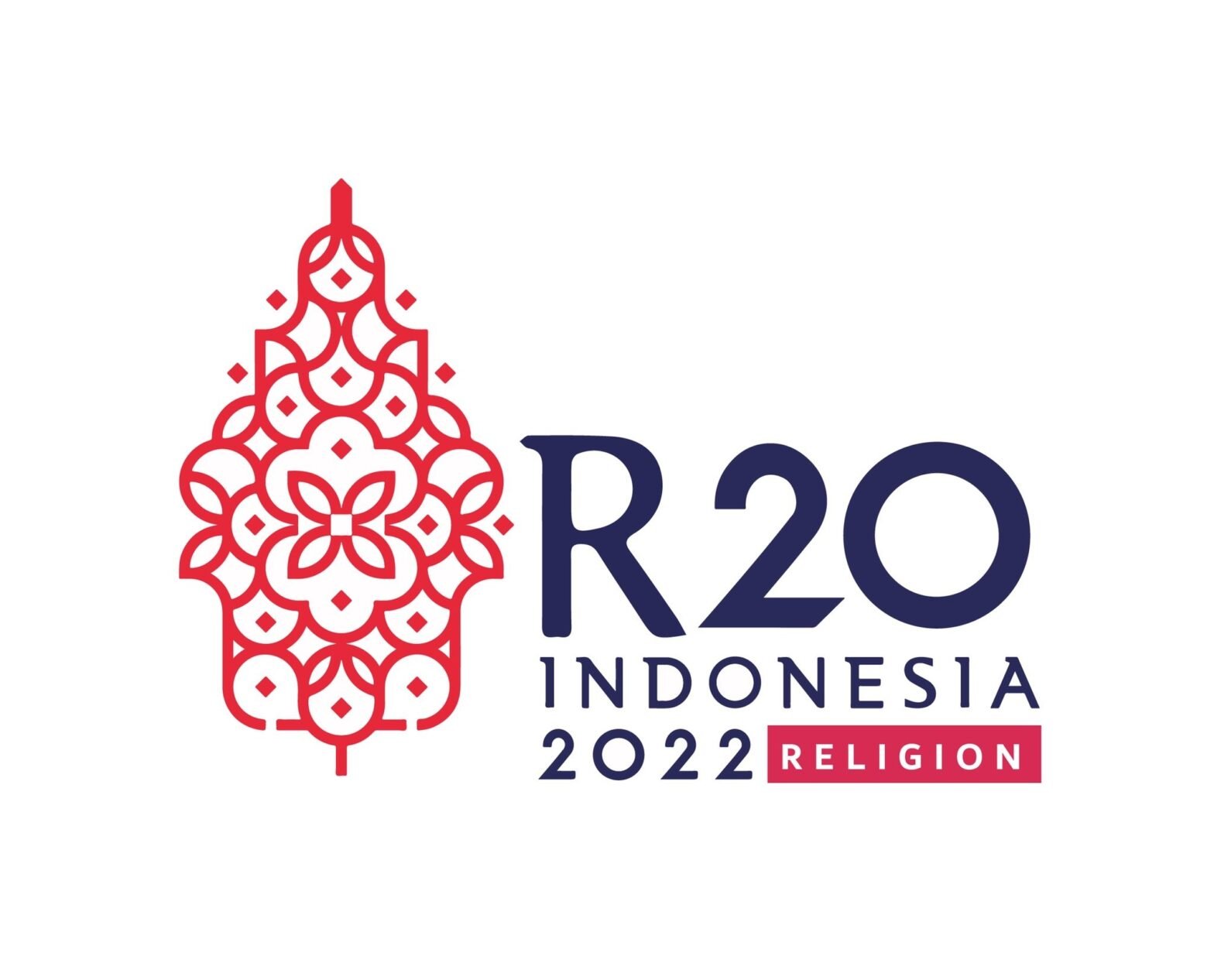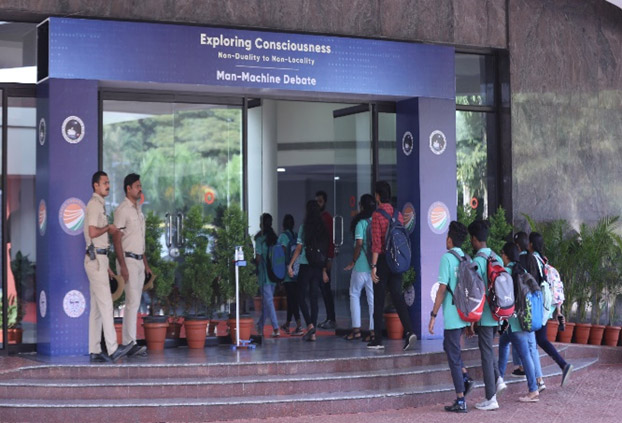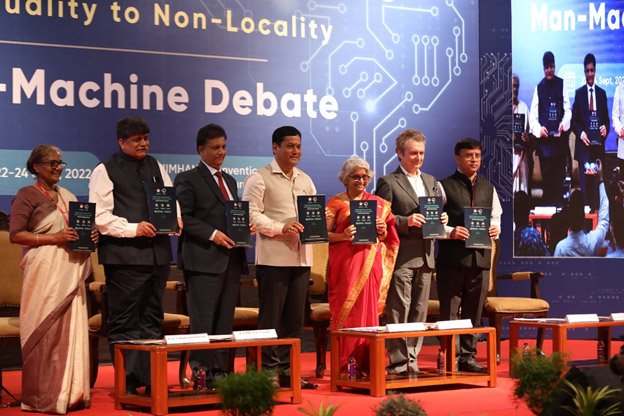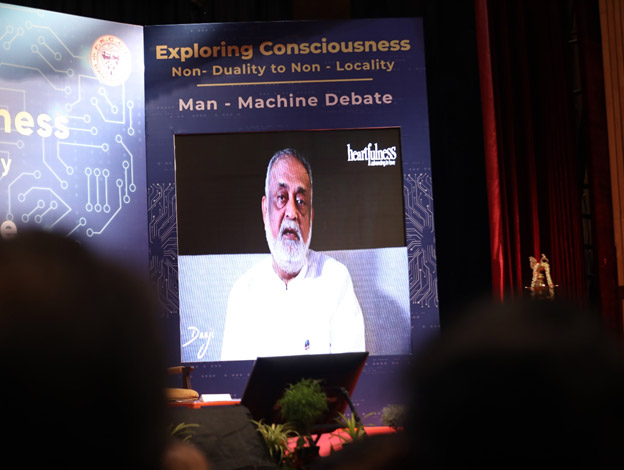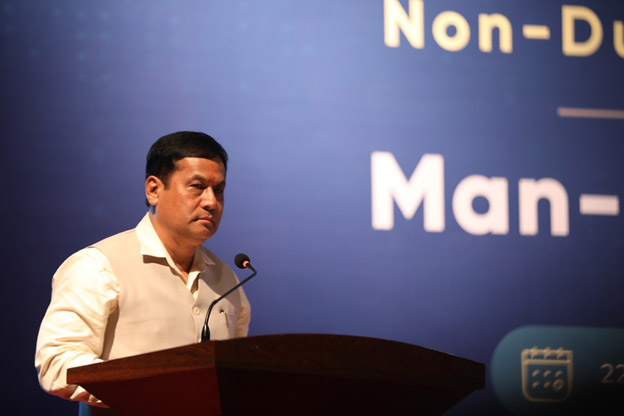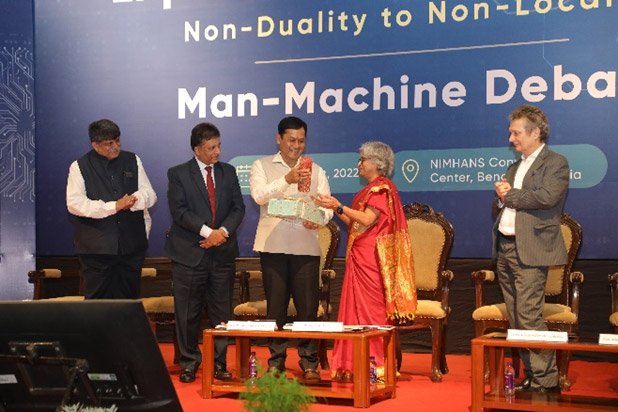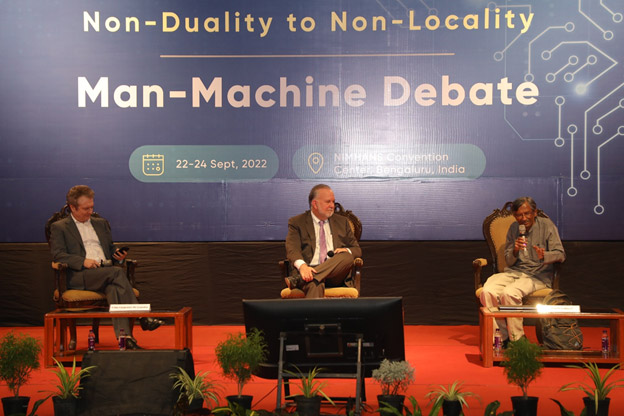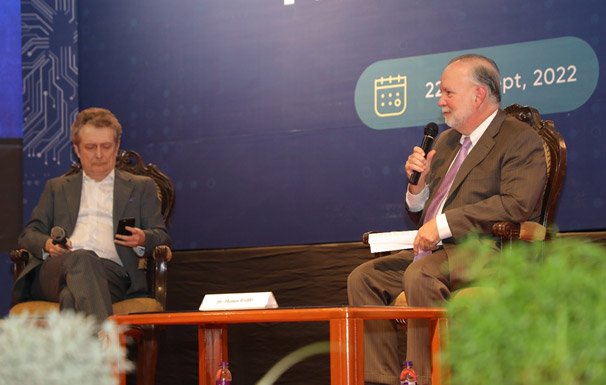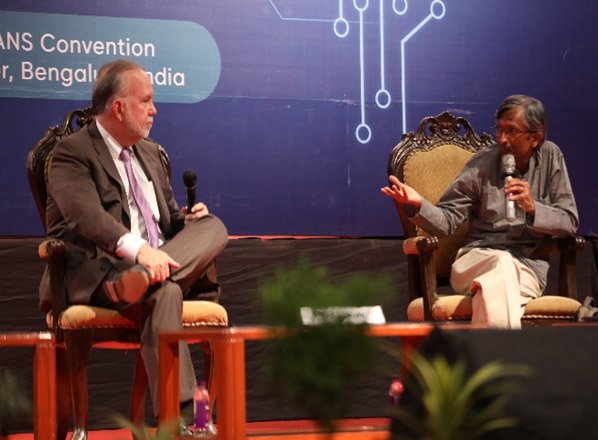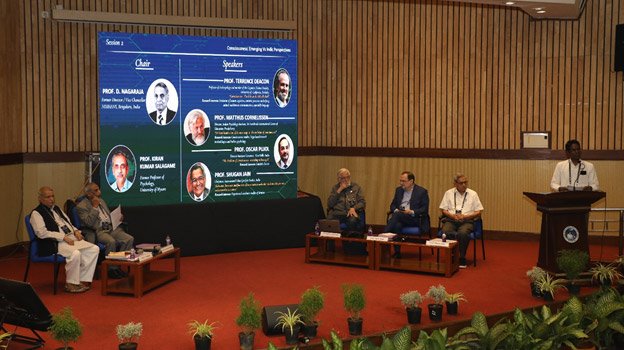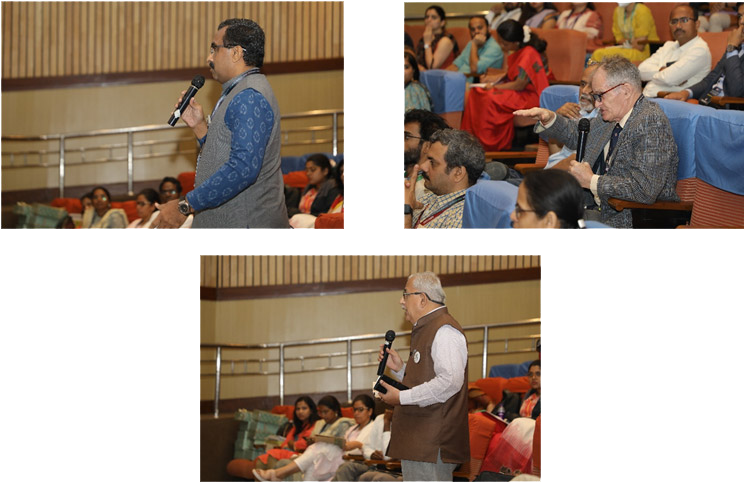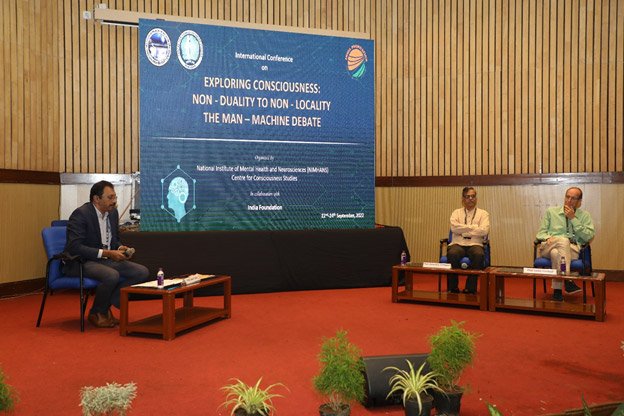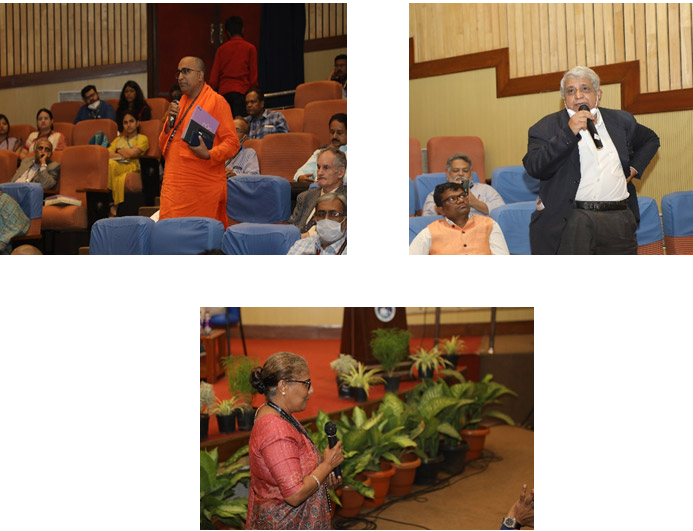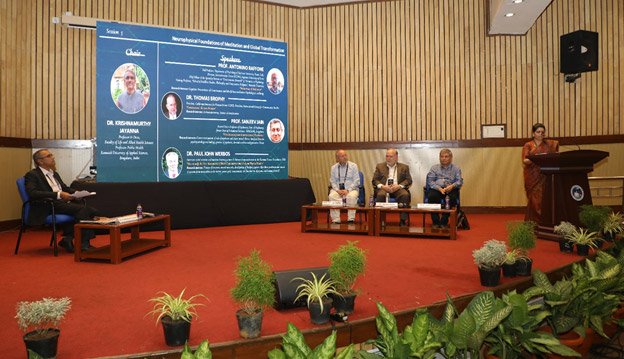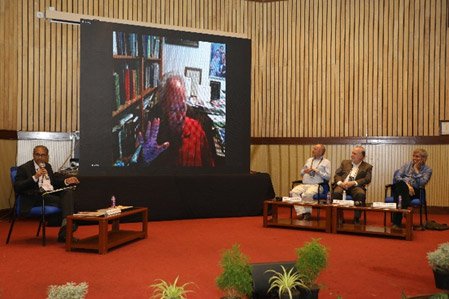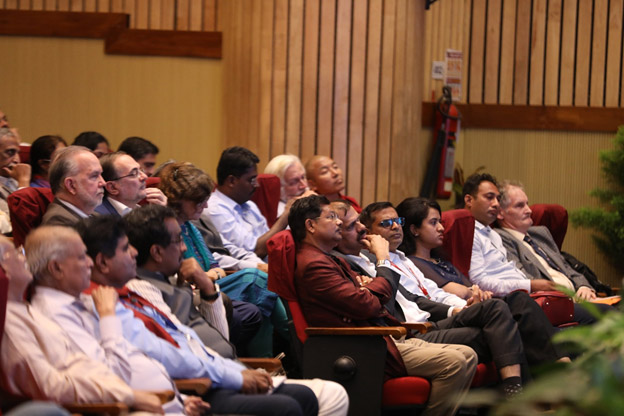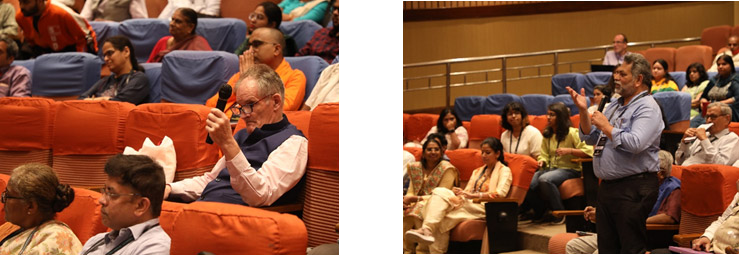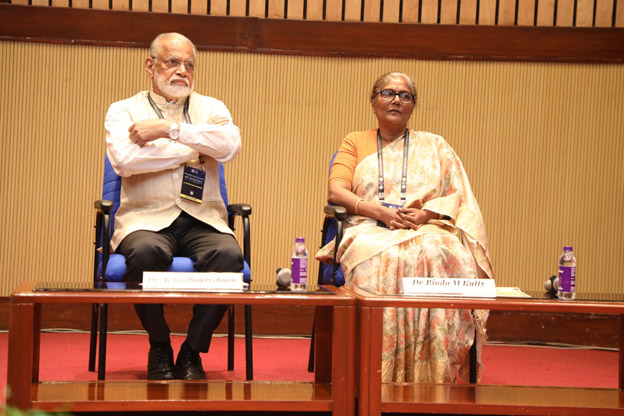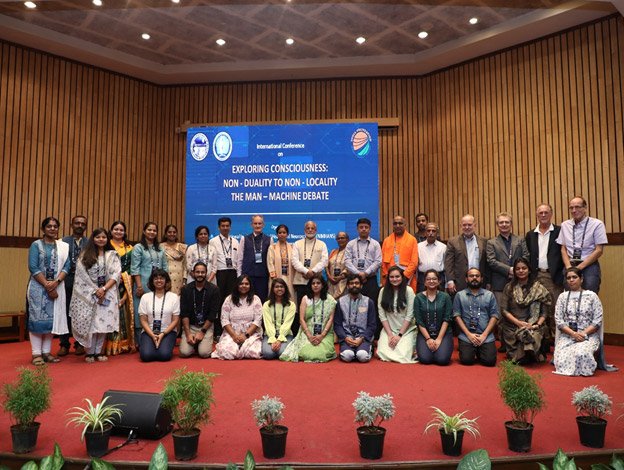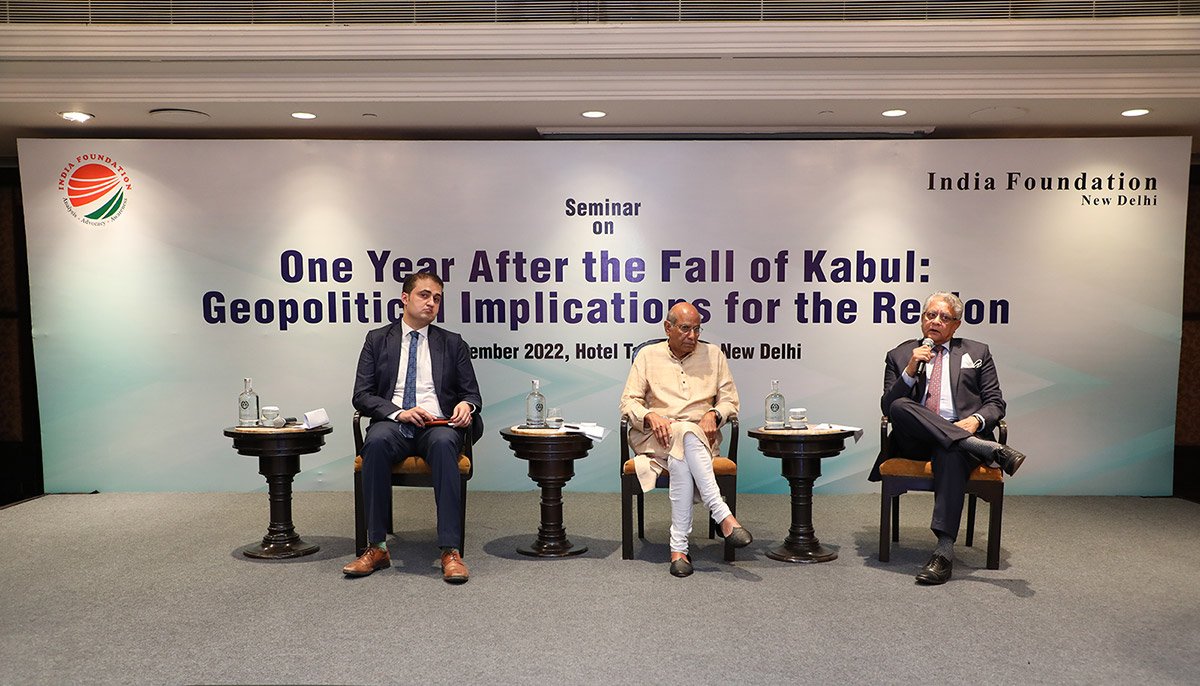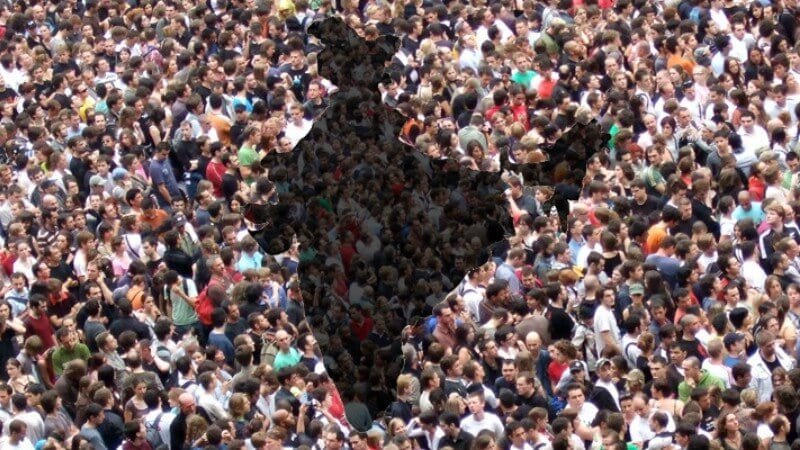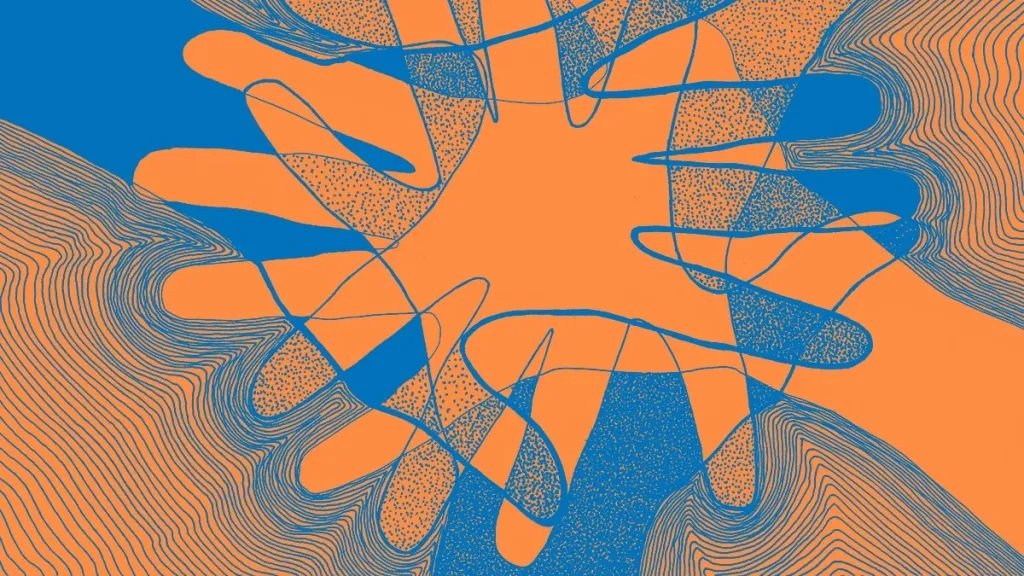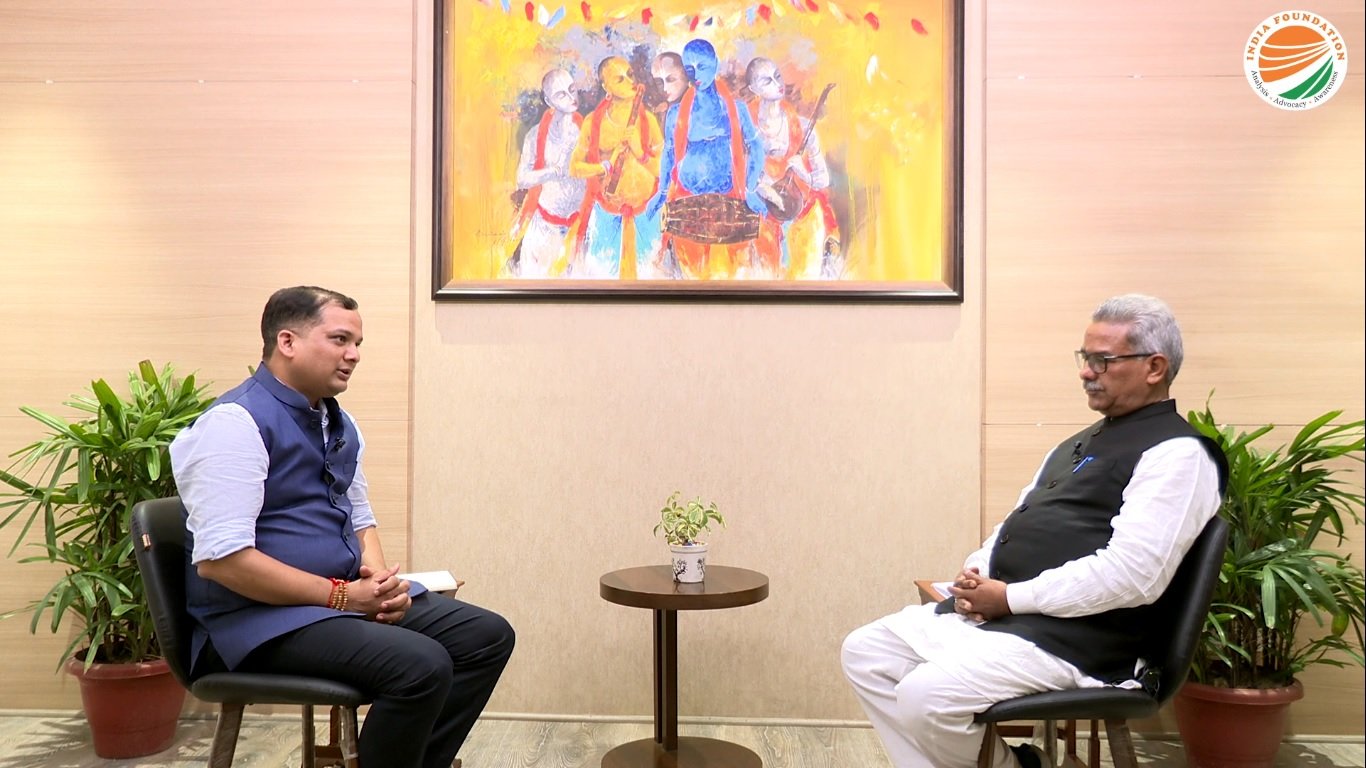“One area where peaceful co-existence has been enormously problematic in the history of humankind is in the relations between world religions. In the past, conflicts generated by religious differences may have been significant and regrettable, but they did not threaten the future of the planet or the survival of humanity.”
His Holiness The Dalai Lama[1]
The challenge of religious harmony and peaceful coexistence will define the task of humanity in the 21st century. The recent rise of religious images in conflict around the globe displays its increasing presence in world affairs. Its relevance in the foreseeable future cannot be undermined. The compelling task for humanity in this century is to pursue the path of religious harmony conquering the stresses of confrontation. The emotive power of religion where a single spark can ignite volumes of risky undercurrents are visible. Hence, religious pluralism, reciprocity and dialogue are some of the rational ways of ensuring communal amity by mellowing mutual attitudes of suspicion and trust.
For this, an in-depth analysis of contemporary society’s spiritual poverty; the enhancement of the view of religion’s embracing role in contemporary society; its ability to present a persuasive, critical appraisal of the modern predicament, particularly in the context of a healthy debate, leading the communities, nations and the world ahead, are vital.
The Indian Context
India, in its seventy-fifth year of Independence stands tall in the comity of nations as a plural, secular democracy. For centuries it has evoked boundless respect with the tremendous privilege and rare opportunity to be the epicentre of innumerable faith traditions along with unprecedented contact with the world’s many cultures. Few countries can boast of such unity in diversity.
For India, championing the idea of religious harmony is not a narrow necessity of electoral politics. Its nationalism is not based on language, geography, ethnicity or religion but a land emerging from an ancient civilisation united by a shared history and sustained by a pluralist democracy.
‘Vasudhaiva Kutumbakam’ (the whole world is one family),” a Sanskrit phrase found in texts of the Maha Upanishad is a key concept embodying peaceful co-existence, diversity, and secularism within its structure, is engraved in the entrance hall of the Parliament of India.[2]
The sentiment of religious harmony, likewise originating in the ancient Indian scripture of the Rigveda, admirably displays plurality of religious thought with its mention “Ekam Sat Vipra Bahudha Vadanti” (wise people explain the same truth in different manners). It also literally means “Truth is one, the wise perceive it differently”.[3]
Indias’s call for unity and solidarity, regardless of religion, language or ethnicity is the idea of one nation that excludes none and accepts differences. In his historic speech in the Parliament of World Religions, Chicago, in 1893, Swami Vivekananda said; “If the Parliament of Religions has shown anything to the world, it is this: It has proved to the world that holiness, purity and charity are not the exclusive possessions of any church in the world, and that every system has produced men and women of the most exalted character.”[4]
Composite Religious Harmony in the Indian Context
Even the most cynical cannot dismiss the essential necessity for religious harmony for a peaceful, progressive India. The idealist perception of a meeting ground of mutual respect enshrined in our Constitution can best serve our democracy. The requisite of moral legitimacy of the burden of peace and harmony therein, obligates a wholesome approach.
In the recent decade, the question of ultra-religious nationalism or creating national identity to the exclusion of religious minorities has stimulated much academic interest and space. It is ironic that Muslims in India must be perceived simultaneously as worthy of emulation and exclusion. Positive stereotypes are often intertwined with negative ones. This paradox of approval and contempt is a typical narration of ideas to serve political narratives.
Further, much deliberation has centred around irreconcilable facets between the Hindu-Muslim identities. For peace to be a continual process, ethnographic studies concentrating on mechanisms to focus on a composite religious harmony must be granted equal space. Dissonance invites adverse repercussions, hampering progress, tilting the scales of harmony, while the amplifying, lightning speed of social media without sanitisation further creates its own nemesis. It must be unequivocally stated that a small band of determined detractors cannot hold the Republic to ransom. The templates for inciting violence, an old conflagration needs to be arrested. The exogenous shock of terrorist attacks, in Paris, India and elsewhere over religious issues still reverberates. Prudence of strategic actors, the efficacy of the state agencies to capitalise in the pursuit of security and harmony is indispensable.
Also, matters of settling scores, and regaining turf harnessed in terms of scoring dividends cannot compensate for the resultant fracture in human relations that can consequently spiral out of control. Those who collude in the matter incongruously emphasise on conflict alone. As a Muslim, it is crucial to reiterate that presently Islam, on several fronts, faces an existentialist crisis—there is an ongoing battle for “the soul of Islam”. The recent murder in Udaipur was a demonic act under the facade of religiosity. Intolerant elements have made every attempt to challenge what has been held as unpardonable attempt with no Quranic validation. Consequently, it created its demons. Perceived profanity leads to confrontational approaches.
A Canvas of Religious Tradition in Islam – Brief Outline
Although Islam’s norms are encompassed in a composite religiosity, in its large canvas of tradition, over a period of time, a variety of streams of thought emerged during its socio-historical-political expansion. Details of these developments are beyond the endeavour of present thesis. Nonetheless, it suffices to mention that various strands of religious thought emerged, ranging from the cosmic-spiritual-assimilative to the exclusive-orthodox-dogmatic.
While the cosmic, spiritual, assimilative traditions embraced by the Sufis later dwindled in numbers, exclusive and orthodox numerically increased with the formation of the clergy at the political behest. These remain high on impact, exerting a sizeable influential at the end of the spectrum.
Correspondingly, the line between exclusivism and fundamentalism has, over a period of time shrunk, as between fundamentalism and extremism. Further, it is generally held that some Muslim majority countries have, by and large, remained inflexible in the advancement of pluralism and yielded to the exclusion and persecution of their religious minorities. This is glaringly visible in Pakistan and Afghanistan.
Even in India, Kashmir and some districts of Bengal and Kerala have not taken care of minorities or lived up to the espoused secularism. But this issue also encompasses a larger part of the world including secular democratic republics where the plight of minorities, whether in ethnic, black, religion or gender issues is unenviable.
However, the horizons for optimism are broadening. It must be mentioned that the process of engagement and liberalisation in the Middle East has begun. It is significant that Arab countries and Israel have taken a step towards peace and normalisation of relations. A joint statement between the state of Israel, the United Arab Emirates and the United States of America has been signed in 2020. Subsequently, Bahrain also signed an agreement and Morocco and Jordan followed.[5] The way forward may be arduous and strenuous; nonetheless the effort is remarkable.
Islam’s Interface with India
There is the contentious question regarding Islam’s interface with India. Critics claim that the indelible legacy of hostilities, tyranny of rulers, forced conversions, destruction of temples, abduction of women still haunt the world. Indubitably, these were lapses by some Muslims, though not Islamic virtues. Moreover, it needs be also stated that there is in India a history about saints, sufis and scholars who sat in opposition to the conquerors. Thus, even while a section of the nobility was concentrating on consolidation of their powers, citizens, both Hindus and Muslims, philosophers, poets, writers, artists, architects, musicians of both communities were engaged in consolidating the syncretic, harmonious trend. The Ganga-Jamuna Tehzib is well known.
Heterogeneity along with adaptability, accommodation and attendant creativity flourished. It was the core characteristic of the socio-cultural-philosophical landscape. The inter-communal fusion is visible in the Bhakti-Sufi Movement of syncretism in the works of Tulsidas, Kabir, Khwaja Moinnuddin Chisti, Ramananda, Guru Nanak, Nizamuddin Auliya, Namadeva, Sri Chaitanya, Farid-ud-din Ganj-i-Shakar, Amir Khusrau and several others. From early times, in the 9th and 10th centuries prior to the advent of conquerors, the works of al Kindi, al Jahiz, ibn Khudadbeh, Yakubi and al Masudi testify to it. Al Beruni, in the early 11th century studied the Indian religion, philosophies, sciences, traditions and culture in his monumental work “Kitab fi tahqiq mafi I-Hind”.[6] A closer reading of his chapter on religion, might have been the terra firma for overcoming theological misunderstandings.[7]
A later manifestation of this was Dara Shikoh’s attempt to identify the convergence of the two faiths discernible in his treatise “The Confluence of the Two Oceans,’’ where he sought to comprehend the Truth. Another example is a mid-17th century work, Dabistan-e-Mazahib, described by a scholar as the greatest book ever written in India on comparative religion.[8]
Ijtihad (Independent Reasoning)
It is true that the silent majority of Muslims in India are peace loving citizens. Belonging to different ethnic groups, sects, races, caste and creeds, they follow the uniform laws of the land. However, most of them remain under the sway of rigid clerics.
In the age of Islamophobia, the time is ripe for Muslims in India to play a lead role in progressive engagement. It is also time for liberal ascendance to take dominance over conservatives fears. Using coercive tools, imposing a narrow litmus test of “Islamnicness” has raised questions on Islam’s compatibility with a “composite religiosity”. The alternate vision of Islamic understanding of ihsan (to do good things) over enforced adherence to religious mores, is dwarfed.
The revitalisation of the legal device of Ijtihad, (independent reasoning) necessitates revival over the doctrine taqlid (imitation, conformity to legal precedent) is imperative. To activate the spirit of inquiry is as necessary now as it was in the past. Legislative inquiry is necessary in every age due to the pressures of growing conditions. To limit juristic discussions to a definition of terms or doctrinal differences or hair-splitting dialectics, turning a dictionary into a fortress, is not in consonance with the dynamic spirit of Islam.
The rich heritage archetypes of foundational Islamic thinkers like Ibn Rusd, al-Farabi, al-Mawardi, Ibn Khaldun, Ibn Taymiyyah, Saadi of Shiraz, and several others, especially on social realism and jurisprudence, besides philosophy and political thought, are a requisite for the focal point of edification. Spiritual underpinning in Waḥdat ul-Wujūd or the transcendent Unity of all Being, the core concept of Ibn ‘Arabī’s philosophy, is a fundamental doctrine in Sufi Islam.
Further, the philosophy of reform and renewal is a recurrent theme in Islamic intellectual thought; the idea of tajdid (renewal) and Islah (reform) is not new to Islamic thought. Ibn Taimiyyah, Shah Walliullah, Mohammad Iqbal, Abdullah al Naim, Tariq Ramadhan, Arshad Arslan, Khalid ibn Abul Fazl, have all sought rejuvenation and transformation.
Muslims in India need to provide adequate answers without apologia. To begin with, religious pluralism in the context of Islamic hermeneutics as the cornerstone suggesting diversity or a pluralist order is not resisted by Islam. Nor is truth the exclusive possession of other many viable religious traditions. Spiritual sacred space is shared and respected. “In truth, God hath sent thee the Book which confirms those that precede it” (Q 2:2); “We have sent Messengers before thee. Of some we have told thee and of some we have not told thee (Q 40:70); “We have sent you in truth, as a Messenger. And there was never a people without a messenger being sent to them (Q 35:24); (Do not revile the gods of others…”(Q 6 :108)
The Medina Charter, the first ever written, displays that Islam rejects the use of enforcement in religion (Q 2:256); (Q 5:32). Violence, brutality and barbarism ignited by terrorist outfits ISIS, Boko Haram, al Qaida, al Shabab, Jaish-e-Mohammad or any such outfits are condemned by Islam. “What the classical jurists of Islam never remotely considered is the kind of unprovoked, unannounced mass slaughter of uninvolved civil populations that we witness regularly. For this, there is no precedent and no authority in Islam”.[9] Similarly, Timothy Winters writes that the proclamations of bin Laden and Ayman al-Zawahiri “ignore 14 centuries of Muslim scholarship,” and that if they “followed the norms of their religion, they would have had to acknowledge that no school of mainstream Islam allows the targeting of civilians”.[10]
The Prophet has stated that, “He who knowingly lends support to tyranny is outside the pale of Islam (Tabarani). He further stated “The worst form of class prejudice is to support one’s community even in tyranny.” (Baihaqi). Violence and terrorism find no sanction in religion, morality or international law. Such acts are in total contradiction to Islam’s reverence for peace, explicit recognition of tolerance, compassion, social equality, high moral order and spiritual depth.
Unfortunately, in India, perceived hurt Muslim sentiments ensuing in the shedding of blood in the name of religion (sar tan se juda), to proselytisation of violence in the name of the Prophet by a small minority of Muslims are extinguishing the original spirit of Islam. Muslims worldwide agonise, when religious leaders and laity remain silent after there is violence in the name of the Prophet whose mission was to establish peace in a nation where ferocity was the order of the day. Internalising puritanicalism, turning it into a point of mistaking it for a universal truth, is negating the basic tenet of peace in Islam.
This is call to the Muslim leaders, Imams, the madrassas and parents in particular, to deradicalise youth, instructing children that such acts are not only detested and abhorred by Islam but are in total contradiction to Islam’s reverence for peace, explicit recognition of tolerance, compassion, social equality, high moral order and spiritual depth.
Islamic organisations in India, have openly condemned the act of beheading while organisations in Pakistan, have not. Vigilance from the dangerous radicalisation of young minds is a priority as is modernising madrassa education by inclusion of the largest range of secular subjects to equip students to broaden horizons and compete in a wider world and education of Imams to deliver Khutbas (sermons) on a wide range of subjects like peaceful coexistence. Muslim intelligentsia must engage in releasing fresh energy to occupy a vantage point in the public domain.
In this connection, it is imperative to recollect that although Muslims, including from almost all of the Arab world, were severely critical and enraged of Salman Rushdie’s Satanic Verses as it was apprehended as a methodical effort to inflame Muslim sentiments, they ignored Imam Khomeini’s fatwa to execute Rushdie. The Organisation of Islamic Conference (OIC) restricted itself to call upon member states to ban the book.
Most Prophets in their life time were ridiculed, mocked and threatened. The Quran said to them “Be patient over what they say and leave them graciously” (73:10). The Prophet himself never lowered his dignity when confronted with defamatory remarks or physical attack. Instead, he kindly and patiently went on with his spiritual soul-searching and message of peace. Arguments of the Prophet conducting himself with dignity even though defamed, ridiculed, humiliated and even attacked are ignored.
Misconceptions and contextamonies (quoting out of context) on the subject of apostasy, blasphemy, jehad, kafir— are the general categories of words where misunderstandings abound. Islam does not permit taking the life of a person on the score of religion, “anyone slew a person unless it be for murder or for spreading mischief in the land it would be as if he slew the whole people: and if anyone saved a life it would be as if he saved the life of the whole people” (5:32).
It is important to note that favourable trends to move away from rigidity are fast emerging in the Muslim world. It is heartening that the Nahdlatul Ulama (NU), the Indonesian Muslim political party and world’s largest moderate Muslim movement, has made a noteworthy breakthrough with Islamic conservatism in an unprecedented decision to abolish the legal category of “infidel” (kafir meaning one who hides the truth) for non-Muslims. Kafir has become a very derogatory term for non-Muslims. Human dignity is not negotiable.[11]
Similarly, numerous Muslims diagonally across the globe currently question the conventional perceptions regarding violence on blasphemy, apostasy. A self-proclaimed clergy “a moral thought police” is not omniscient and Muslims feel the rulings or “fatwas” delivered by them are contextual. Recently, in a pioneering interview with “Al-Arabiya”, the distinguished Saudi Crown Prince, Mohammad bin Salman, initiated a ground-breaking suggestion on concentrating the Constitution and laws on the Koran, eliminating many hadiths (sayings of the Prophet) that are not muttawatir (well known). He speaks of the need for a current “interpretation” of the Koran.[12]
Political Moderation
Currently, rhetoric is a powerful weapon in conflict situations. Hate, particularly with relation to religion has taken dangerous dimensions. While safeguarding freedom of speech, challenging hate through adjudication would be a deterrent. Hatred is ‘a threat to everyone,’ declared Guterres, calling for global effort to end xenophobia and ‘loathsome rhetoric’. “A disturbing groundswell of hate-based violence and intolerance aimed at worshippers across all faiths, must be countered soon before it’s too late,” he said.[13]
Presently, political moderation, a composite religious dialogue for peaceful co-existence is a seminal factor. Allegedly, determining the definition to legitimise citizenry; supremacist approaches, reinventing the convulsions of partition, questioning Muslim patriotism, considering them a breeding and a threat to national security have been disturbing issues. On the other hand, the fringe Muslim belligerency, hard-line urgings instead of reasoned argument, intolerance spilling in collision with other ideologies especially when it comes to religiosity, scornful of their traditions attacking the Hindutva movement, not mentioning thirteen centuries of Islamic fundamentalism or oppression, disrespecting the National flag, has drawn equal angst.
Educational levels yet remain below the national level. Although the graph of women’s education is rising, yet the pace of slow social reforms also results in slow movement and workforce participation. Presently, while autonomous correctives remain a single facet of the matter, communication with the mainstream community is another matter necessitating a forthright dialogue and a cautious calibration as equal citizens. The failure to communicate with the larger community in adequate measure has inclined to limit the boundaries of diversity that are a benchmark of Indian society.
The moorings and ideology of Muslims reflect an inclusive composite society with no room for the practice of violence or intolerance; “All creatures form the family of God and he is best loved of God who loves his creatures” (Baihaqui: Kitab ul Iman). Hubbul watan Minal Iman “love for one’s nation is a part of faith” (Sakhawi). As the Holy Qur’an states, “And break not the oaths after making them firm” (16:92).
Conclusion – India as Homeland – The Road Ahead
India is the cherished homeland—a rhapsody of serenity, peace and security, with a limitless horizon for all Indians where the idea of the “other” is not conceptualised. The task currently is to tutor the outlook on xenophobia, a circumscribed nationalism and a proscriptive democracy. The remarkable enrichment of the heritage of India’s inimitable reciprocity, accommodation and dialogue are rational ways of ensuing communal amity. The values of a composite religious harmony, synchronisation, congruence was not gifted to India. On the contrary they have been ingrained in India’s composite culture.
On December 13, 1946, the Constituent Assembly, when outlining the objectives of the Constitution that later grew into the Preamble, assured the people of the core democratic values of Justice, Liberty and Equality. Fraternity was added as a core value by Babasaheb Ambedkar on February 21, 1948. The preambular values are unexceptionable. Promotion of Fraternity is the pillar in strengthening unity, integrity and social ties assuring that the dignity of the individual citizen is non-negotiable. This fundamental duty is defined in Article 51A(e).
Leaders of the Indian Independence movement—Mahatma Gandhi, Vallabbhai Patel, Jawaharlal Nehru, Maulana Azad, and numerous others from both communities, adhered to the notion of composite nationalism and communal harmony. Muslims in India must be part of the process of India’s advancement as a global power and not mere spectators or beneficiaries. In the past and present they have produced some distinguished social reformers, scientists, educationalists, attorneys, artists nurturing India’s splendorous progression. Sir Syed Ahmed Khan, Begum Aijaz Rasul, Abadi Babo Begum, Bi Amma, Begum Hasrat Mahal, Maulana Mumtaz Ali Khan, Maulvi Chirag Ali, Justice Ameer Ali, Saif Tyabji, Dr Zakir Hussain, Dr. APJ Abul Kalam, Salim Ali, Azim Premji, Ustad Vilyat Khan and many others have contributed to India’s magnificence and accomplishment.
Currently, centrality of civil society to enable a composite religious dialogue conceptualised in interpersonal relationship as a process of dynamic engagement and function is quintessential. Silence is not an option. Emerging trends imbued with greater realism can discard inherited ideological inertia to realise greater possibilities.
A leap of faith moving towards an aspirational civilisation, intersecting, firming the thread for a religious dialogue would be motivating. A civil society outreach strategy could focus on the promotion of a composite religious dialogue, strengthening national integration, fostering diversity through collaborate action programs and greater inter-faith interchange with religious leaders. Cultural and social organisations representing key sections of society could open fresh vistas for alliances. The requisite conversation among the people of India solicits commencement. As the venerable Buddha said, it is time to turn the poison into medicine.
“Chaman mein ikhtelate rango buh se baat banti hain,
Hum hi hum to kya hum hain, Tumhi tum ho to kya tum ho”
Sarshar Sailani
(In the garden there an integration of colour and aroma, togetherness is when we integrate)
Author Brief Bio: Zeenat Shaukat Ali is the Director General, Wisdom Foundation (World Institute of Islamic Studies for Dialogue, Non-violence, Gender Justice and Peace).
References:
[1] His Holiness, The Dalai Lama; “Towards True Kinship in Faiths. How the World’s Religions can come Together”; ABACUS, London, 2012 p xi
[2] Maha Upanishad, Chap 6, verses 72,73
[3] Ekam Sat Vipra Bahudha Vadanti” is a Sutra quote from of all the over one hundred Upanishads. This aphorism means: “That which exists is ONE; sages call it by various names.”
[4] Swami Vivekananda’s Speech, Parliament of World Religions, Chicago 1893; Edited by: Sanchari Chatterjee, September 11, 2017.
[5] “Israel, UAE and Bahrain sign Abraham Accord; Trump says “dawn of new Middle East””. Press Trust of India. The Hindu. 2020-09-16.
[6] Al-Biruni (d. after 1050) translated Sanskrit classics into Arabic. He then wrote his monumental “Kitab fi tahqiq mafi I-Hind” in order to acquaint his Ghaznavid rulers with Hinduism. He claimed that barriers separating Hindus from Muslims were based either on lack of education, political reasons or language barriers.
[7] Ibid, Al-Biruni ; “Kitab fi tahqiq mafi I-Hind”
[8] The Dabestān-e Mazāheb “school of religions” is a Persian language work that examines and compares South Asian religions and sects of the mid-17th century. The work, whose authorship is uncertain, was probably composed in about 1655 CE. The text’s title is also transliterated as Dabistān-i Mazāhib , Dabistan-e Madahib, or Dabestan-e Madahe.
[9] Lewis, Bernard (27 September 2001). “Jihad vs. Crusade”. Opinionjournal.com.
[10] Winters Timothy; “Abdal-Hakim Murad, Bin Laden’s Violence is a Heresy Against Islam”. Islamfortoday.com; 3 January 2010.
[11] The word been abolished the Legal Category of kafir “Infidel” within Islamic Law, Unprecedented Rulings Issued by the Highest Authority of the World’s Largest Muslim Organization Historic Effort to “Transform the Prevailing ‘Muslim Mindset,’ for the Sake of World Peace and to Achieve a Harmonious Communal Life for All Mankind” . (Barnabas Aid, World’s Largest Islamic Organisation Drops Legal Category of “Infidel” in Historic Decision (October 22, 2019 )
[12] HRH Mohammed Bin Salman attempts Reform in Islam; Al Arabiya, by Kamel Abderrahmani; 5/08/2021, 11.06. MBS says the reform is clear: “The government, where Sharia is concerned, has to implement Quran regulations and teachings in mutawatter (well-known) hadiths, and to look into the veracity and reliability of ahad hadiths, and to disregard “khabar” hadiths entirely, unless if a clear benefit is derived from it for humanity. So, there should be no punishment related to a religious matter except when there is a clear Quranic stipulation, and this penalty will be implemented based on the way that the Prophet applied it.” In this case, according to this criterion, only 10% of the valid hadiths remain, which are those converging with the Koran. (Published by Buletin Al Anwar on August 21, 2020; Hubbul Watan Minal Iman 26th January 2021 Republic Day||Baughe Mufaddal|
[13] UN News, Global Perspectives, Human Stories, TOI, April 29th 2022

